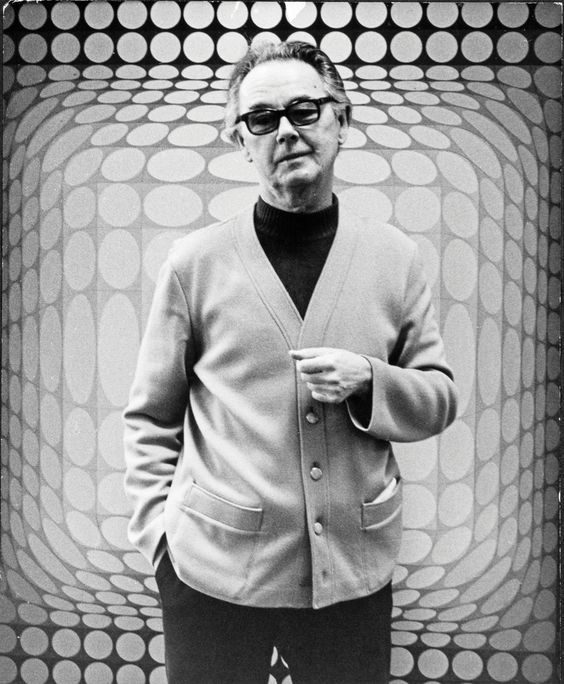
Victor Vasarely
Buy original Victor Vasarely artworks, featuring vibrant paintings, signed prints, and limited editions that showcase his role as the father of Op Art. Vasarely’s geometric abstractions and bold optical illusions transformed modern art, making his works highly sought after by collectors and institutions worldwide. From striking screenprints to original paintings, each piece embodies the innovation and precision that define Vasarely’s legacy. Collectors today recognize not only the cultural importance of his work but also its strong investment potential, as demand for Op Art continues to rise globally. Explore available Vasarely artworks at ArtLife and invest in timeless modern masterpieces.
Biography
Vasarely was initially more drawn to the sciences than the arts, studying medicine at Budapest University himself. However, after two years, he made a radical decision to leave his medical education behind him, enrolling at the Muhely Academy to study painting in a more formal academic setting. Here, he was influenced by Bauhaus, a German art movement that merges the disciplines of fine art with elements of arts and crafts. He explored many different visual forms, including optics, to incorporate the ideas of the movement into his art, and combining art and architecture.
He moved to Paris in 1930 where he worked in advertising agencies as a graphic designer, combining patterns and organic images to create commercial posters. Vasarely began experimenting in styles based in Abstract Expressionism and Surrealism, which allowed him to develop his signature black and white chequerboard paintings.
Vasarely’s first solo exhibition took place at Paris’s Denise Rene Gallery in 1944, and it was the success of this initial show which convinced him to pursue a career in art.. And since then, he has been recognised as one of the most interesting painters of the 20th century. Outside of his painting, Victor has had the opportunity to design the official spiral-shaped logo of the Munich Olympic Games in 1972.
The artist has won several awards, including the Guggenheim Prize, Art Critics Award and a gold medal at the Milan Triennale. Vasarely died in Paris in 1997, and since then, his work has been exhibited worldwide at major galleries and museums, including the Art Institute of Chicago, the Tate Gallery in London and the Peggy Guggenheim Collection, Venice.
His famous chequerboard paintings include Bi-Supernovae and Jerusa oth of which have been created with illusion in mind. Each painting uses pattern and black and white lines to produce a three dimensional effect—some paintings were influenced by the cracked tiles at a station in Paris.
While his earlier creations were more concerned with color theory, during the 1950s and 60s he became interested in the optical potential of the two-dimensional surface. This was inspired by the Bauhaus movement’s possibilities of mixing art and architecture. With these ideas, he started to employ complex and colorful patterns, as seen in his piece titled Okta folk
Vasarely was one of the key artists responsible for laying the foundations of the Op Art movement, which blended the scientific devotion of his youth with a focus on technical methods. His inclinations towards geometric shapes and grid-like patterns became the calling cards of his best work.
His paintings also made use of patterns based on optical illusions, which can be seen in his works including Hexa-Vega, taken from his Vega series. These brought a sense of play to art lovers’ visual field, enchanting them with experiments in perspective and dimension. Considered the ‘father’ of the Op Art movement, his style and artistic beliefs helped him to create an impressive collection of optical paintings and sculptures.
We have an exclusive collection of original pieces created by the internationally renowned artist available to collectors. Please contact us if you require any assistance before buying a Victor Vasarely artwork, and we’ll be happy to address any queries you may have.
